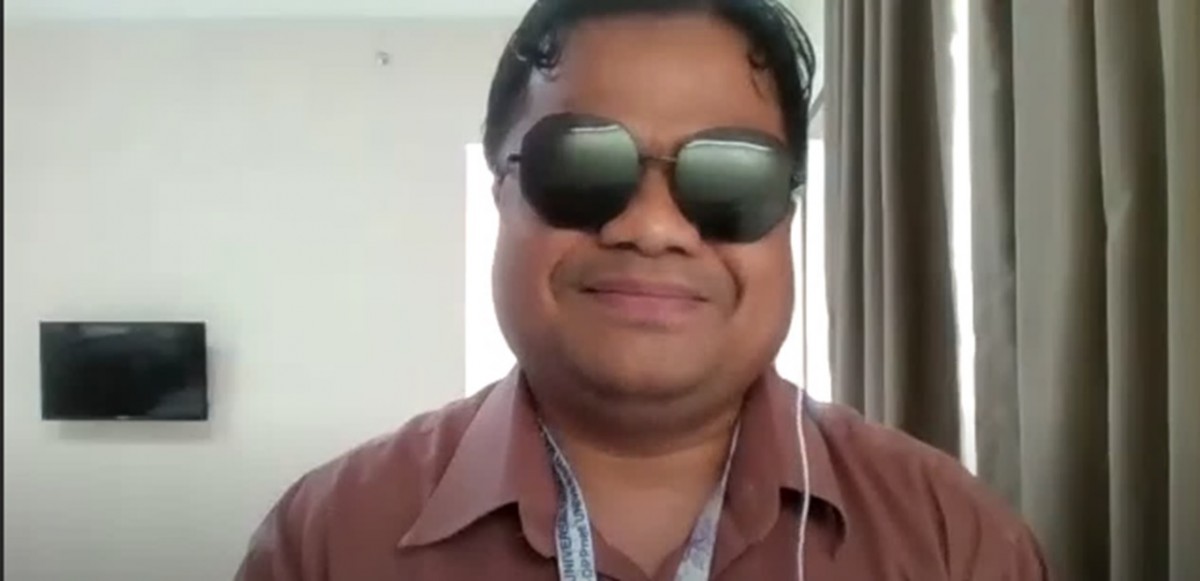2024 [Best Practice Interview] 2014 GITC Participant Aikeo Koomanivong from Laos
Page info
Name Master Hit: 945 Date 24-09-02 17:26Contents
[Best Practice Interview] 2014 GITC Participant Aikeo Koomanivong from Laos
Inspiring Journey of Aikeo Koomanivong: From GITC Participant to Disability Advocate
In anticipation of the upcoming GITC final round this November, we try to share the interviews with some of our past participants. First of all, we’re excited to introduce the story of Aikeo Koomanivong, a participant with visual impairment from Laos who took part in the 2014 GITC.
Q: Hello, can you please introduce yourself?
A: Hello! My name is Aikeo, but you can call me Keo. I am the director of the Disability Service Center in Laos. Our organization has been working to support people with disabilities in Lao PDR since its establishment in 2012, and we've been going strong for 12 years now.
Q: Wow, it’s amazing that you’re running a disability service center as a person with a disability yourself! Could you please tell us more about the work you do?
A: We offer massage training to visually impaired individuals, which is a skill that can provide them with sustainable employment opportunities. Additionally, we provide computer education to university students, ensuring they have the necessary skills to thrive in their studies and future careers. We also support universities by supplying accessible braille textbooks, making higher education more inclusive for visually impaired students.
Furthermore, we collaborate with NGOs operating in Lao PDR, advising them on how their projects can better support people with disabilities. One of our current projects involves developing free braille software, which will allow visually impaired individuals to create and access books without the burden of licensing fees. Additionally, we work closely with local communities to help integrate people with disabilities into society.
Q: The work you’re doing is truly admirable! I think it’s truly inspiring! I see that you participated in the GITC held in Busan 2014. Could you share how this experience has impacted you and the community?
A: I have many fond memories of participating in GITC. It was an incredible learning experience where I gained valuable insights and made lasting connections. One of the highlights was meeting a visually impaired friend from Indonesia. Through our interactions and the various sessions, I realized the immense potential of IT for visually impaired individuals. The most significant takeaway was understanding that IT can become the "third eye" for us. Even though we have lost our sight, mastering IT skills can empower us to work, study, and navigate life as effectively as anyone else. It truly opened up new possibilities for me and my community.
Q: The expression "third eye" is really impressive. I think it’s a great metaphor. So, after the GITC ended in 2014 and you returned to you home country, what changes occurred?
A: Participating in 2014 GITC, I realized how much we still lagged behind others in terms of IT skills and resources. It was a wake-up call for me. I made it my mission to study the materials provided by GITC and learn as much as I could on my own. I started by mastering screen reader shortcuts and exploring online resources. These efforts marked the beginning of my journey to self-learn IT and participate more actively in the digital world. Understanding the importance of IT skills for visually impaired people had a profound impact on me, and it became clear that this was the key to unlocking new opportunities.
Q: So the GITC became a motivation for you to keep learning and mastering new skills. I’m glad to hear that. There must be many youth with visual impairment in Laos who also want to improve their IT skills. What methods would you recommend to them?
A: When I was young, the resources available to us were very limited. But today, there are plenty of online resources created by people worldwide. My advice to visually impaired youths is to take the initiative to learn. Even if you are self-taught, it's essential to apply what you've learned in real life. IT skills are the most critical foundation for working, studying, and even graduating from university. The world is becoming more digital, and the sooner they start learning, the better equipped they will be to navigate the challenges ahead.
Q: You really emphasize the importance of IT! There are many youth with disabilities who, like you, recognize the significance of IT and want to participate in GITC. If you could give them one last piece of advice, what would it be?
A: First, express with confidence. We are all human beings living together, and it's important to voice our needs and ask questions. It's also crucial to make friends and build a network because we need to grow together with visually impaired individuals from other countries. Additionally, share the knowledge you gain from GITC with other visually impaired or disabled individuals who are interested in GITC. This will help create opportunities for others who are also seeking to develop themselves. Remember, the key is to stay curious, keep learning, and never hesitate to reach out for help when needed.
From the moment Mr. Aikeo Koomanivong agreed to the interview, he was filled with passion. Despite facing challenges with internet connectivity due to being on an international business trip and coordinating schedules with the GITC office, he successfully completed the interview out of his deep commitment to GITC participants!
Not only was the interview excellent, but he also provided valuable insights on how GITC can further benefit youth with disabilities. (Thank you so much!) A participant from the 2014 GITC has now become a prominent advocate for disability issues. Stay tuned for more best practice interviews! ☺


